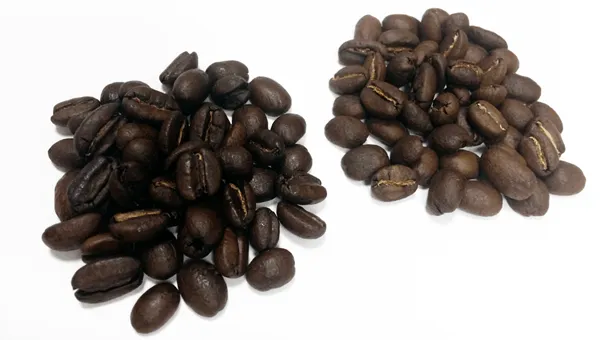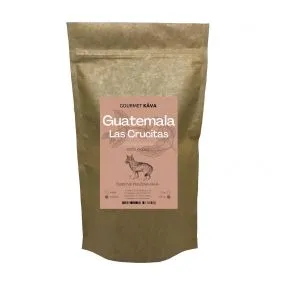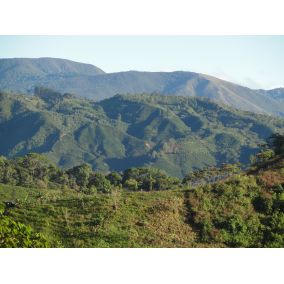 Roasting coffee is a really beautiful alchemy and it is undoubtedly one of the most important moments that coffee beans go through between the initial harvest and the final grinding for your cup of coffee.
Roasting coffee is a really beautiful alchemy and it is undoubtedly one of the most important moments that coffee beans go through between the initial harvest and the final grinding for your cup of coffee.
The green coffee bean could have got various interesting flavors and tones into the wreath , but only the right roasting will really make them stand out perfectly . The color range of coffee beans starts with green, which gradually changes to light yellow, cinnamon brown, dark brown with the loss of water, and ends with black.
At each stage of roasting, different tastes stand out in the coffee, and we will now show you the differences in the tastes of coffee roasted to a lighter grade (cinnamon color) and to a darker grade (dark brown, city +).
Differences in the tastes of light and dark roasted coffee
The green coffee bean itself does not resemble the taste of coffee very much. You can try pouring hot water over the ground green coffee for its high content of antioxidants and it will remind you more of green tea. The moment when the coffee beans reach the light cinnamon color becomes interesting for us.
Lighter roasted coffees give the most prominence to all the original flavors and tones that are found in coffee. These tastes are lost more and more with further roasting. Light roasted coffees are rich in fruit and caramel tones and are therefore especially suitable for alternative coffee preparation.
Darker roasted coffee - in our country it is the degree of feeling + (darker brown) slowly loses subtle taste nuances, but on the other hand, the body of the coffee becomes much fuller . For many consumers, it will also be an advantage that the coffee is less acidic . Such coffee is then particularly suitable for making espresso .
Which of these coffees is less acidic?
Simply put, acidity slowly changes to bitterness during roasting . Lighter roasted coffee is characterized by the fact that it is slightly more acidic than darker roasted coffee. Fruit coffee is overestimated, and acidity is typical of fruit. These are pleasant fruit flavors that are completely natural for coffee. Dark roasted coffees have significantly less acidity , with a slight bitterness.
How much roasted coffee do we have in GourmetKáva?
In our shop you can try both light roasted coffee and dark roasted coffee . A darker degree of roasting is standard for all our coffees and is also the most popular among customers. We also offer two of our Brazil Santos and Ethiopia Sidamo coffees in lighter roasts in cinnamon. We recommend these coffees especially for alternative methods.
It should be noted, however, that the darker grade is definitely not as dark as it is often with chain coffees . Our coffee does not taste burnt and its color is nice dark brown, not charcoal black. In addition to low-quality beans, many coffees from retail chains also have a high degree of roasting . Coffee is often almost charcoal black and its taste is reminiscent of burns. Such coffee is neither good (often very bitter) and definitely not healthy.
>> All coffee, including the classically darker roasted, can be found in the Coffee Beans or Ground Coffee section . <<
Which coffee has more caffeine?
A very common myth is that light roasted coffee has more caffeine. However, the truth is that with the change in the degree of roasting, the amount of caffeine in the coffee does not change significantly .
But what is changing is the size of the coffee bean. Lighter roasted grains are smaller, and if we measure one scoop, it will fit more light grains than dark grains. As a result, it is possible that coffee prepared from light roasted beans will have more caffeine .
However, there is a significant difference in the amount of caffeine between arabica and robust. Robusta coffee contains up to 2x more caffeine than arabica coffee . That's why it's also so strong and bitter. However, quality robusta can be good for creating mixtures with arabica. It gives fine Arabics strength and more caffeine.
TIP: You must not be so hrr for coffee. He needs some rest after roasting. This is because it releases carbon dioxide during roasting, so it is a good idea to let it rest for at least another 24 hours to exhale excess gases. Even after these 24 hours of coffee, the gas produces gas, so it is best to consume coffee a few days after roasting . We recommend about 14 days, when we think the coffee is in the best condition.
MEDIUM ROAST coffee of the Ethiopia Sidamo variety. Ethiopia gave coffee its name after the Ethiopian province of Kaffa, and some of the best coffee in the world is grown there.
MEDIUM ROAST coffee of the Ethiopia Sidamo variety. Ethiopia gave coffee its name after the Ethiopian province of Kaffa, and some of the best coffee in the world is grown there.
MEDIUM ROAST excellent coffee Crucitas from Guatemala , which also won a prestigious award. You will smell tones of chocolate, caramel, hazelnuts . The taste is slightly fruity .
MEDIUM ROAST excellent coffee Crucitas from Guatemala , which also won a prestigious award. You will smell tones of chocolate, caramel, hazelnuts . The taste is slightly fruity .
MEDIUM ROAST coffee Kenya Top Masai . In the area around the highest African mountain, Kilimanjaro , one of the world's best 100% Arabica beans is born, thanks to which you will reach coffee bliss.
MEDIUM ROAST coffee Kenya Top Masai . In the area around the highest African mountain, Kilimanjaro , one of the world's best 100% Arabica beans is born, thanks to which you will reach coffee bliss.
MEDIUM ROAST Costa Rica Tarrazu coffee is a very fine and incredibly perfectly balanced high quality coffee originating from the extinct volcanic mountains of Costa Rica.
MEDIUM ROAST Costa Rica Tarrazu coffee is a very fine and incredibly perfectly balanced high quality coffee originating from the extinct volcanic mountains of Costa Rica.
Ethiopia Sidamo, MEDIUM ROAST, whole bean...
Guatemala Crucitas, MEDIUM ROAST, Arabica...
Kenya Top Masai, MEDIUM ROAST, whole bean...
Costa Rica Tarrazu, MEDIUM ROAST, whole bean...






























































































